When to Feed My Marijuana Vegetative Plants
Content updated August 2022
The Cannabis plant has two main stages in its life cycle: vegetative and flowering stages. In this article, learn about the vegetative stage, and what happens after the seed sprouts and the seedling evolves into a young plant.
Not there yet? Read our article on Cannabis seedlings and come back later!
- Cannabis plant in the vegetative stage
- How long does the vegetative stage last in a Cannabis plant?
- Cannabis plants growing outdoors (soil in pots) – Vegetative stage week by week
- Basic growing requirements
- Light
- Growing medium
- Pot size
- When to Transplant Cannabis
- Watering
- How much water does my plant need?
- Temperature
- Humidity
- Nutrients
- Macronutrients for Cannabis in the vegetative stage
- Secondary and micronutrients for the vegetative stage
- pH levels
- How does the Cannabis plant change stages?
- Male, female or hermie? Determine the sex of your plant
- First signs of the flowering stage in Cannabis plants
Cannabis plant in the vegetative stage
After growing the first set of fan leaves with a complete set of leaflets, the plant goes from being a seedling to the vegetative stage. Now the plant grows only stems and leaves (not flowers or "buds") and focuses all its energy on growing big and strong.
The plant must grow its body with air, light, and nutrients. The recently formed roots are now expanding into their growing medium, looking for water and nutrients. The roots also need air, so make sure there is plenty of air space in the growing medium.
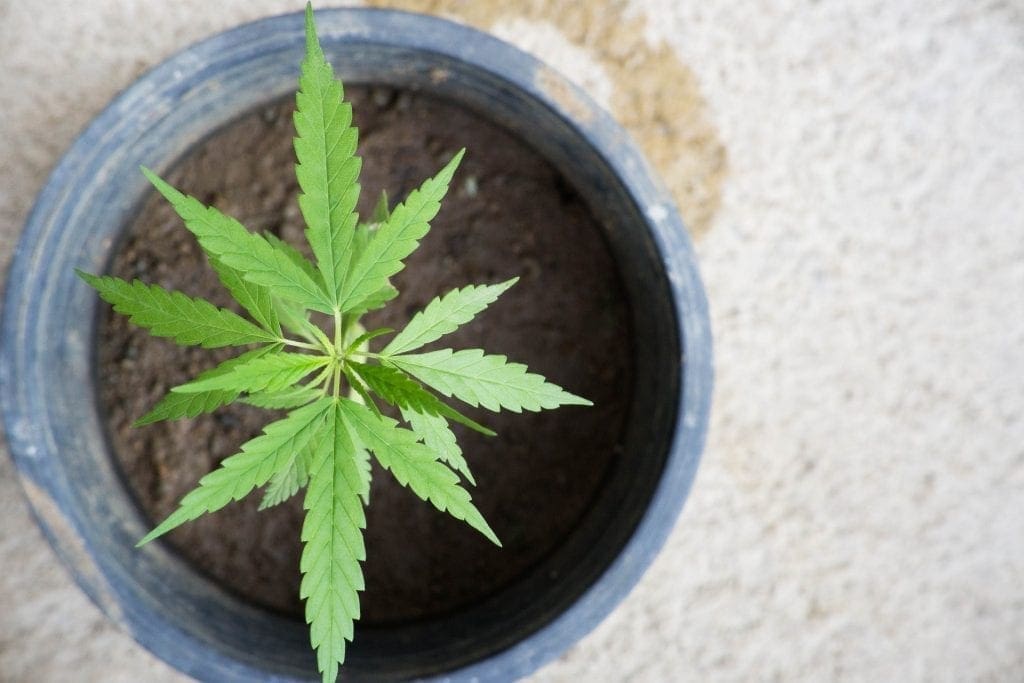
How long does the vegetative stage last in a Cannabis plant?
In the vegetative stage, a healthy Cannabis plant grows in height and size as much as it can under the given conditions. So the bigger the pot and the environment, the bigger the plant will be, provided it has the needed growing requirements.
The vegetative stage in Cannabis plants may last from 3 to 16 weeks, or even more in outdoor crops.
Most growers vegetate their indoor plants for 4-8 weeks, depending on the desired plant size. Cannabis plants are usually able to start flowering from the 4th week of the vegetative stage. Probably as a result those plants will be smaller in size. Giving your plants more vegetative time and bigger pots will result in bigger plants and more likely to produce higher yields.
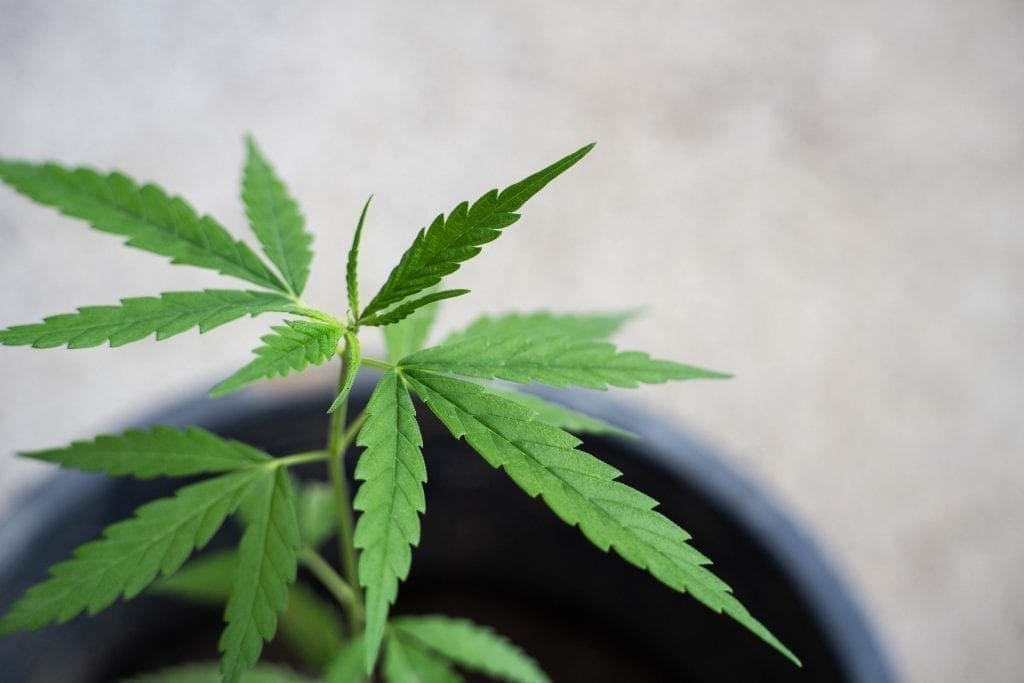
A Cannabis plant may be left in the vegetative stage as a mother plant or stock plant, to take cuttings from it and make clones. Mother plants live their lives continually in the vegetative stage (18/6 hours) unless you want them to flower, then switch to 12/12 hours. Clones may be grown in the vegetative stage until they achieve the desired size and then switch to the flowering stage (12/12 hours).
Cannabis plants growing outdoors (soil in pots) – Vegetative stage week by week
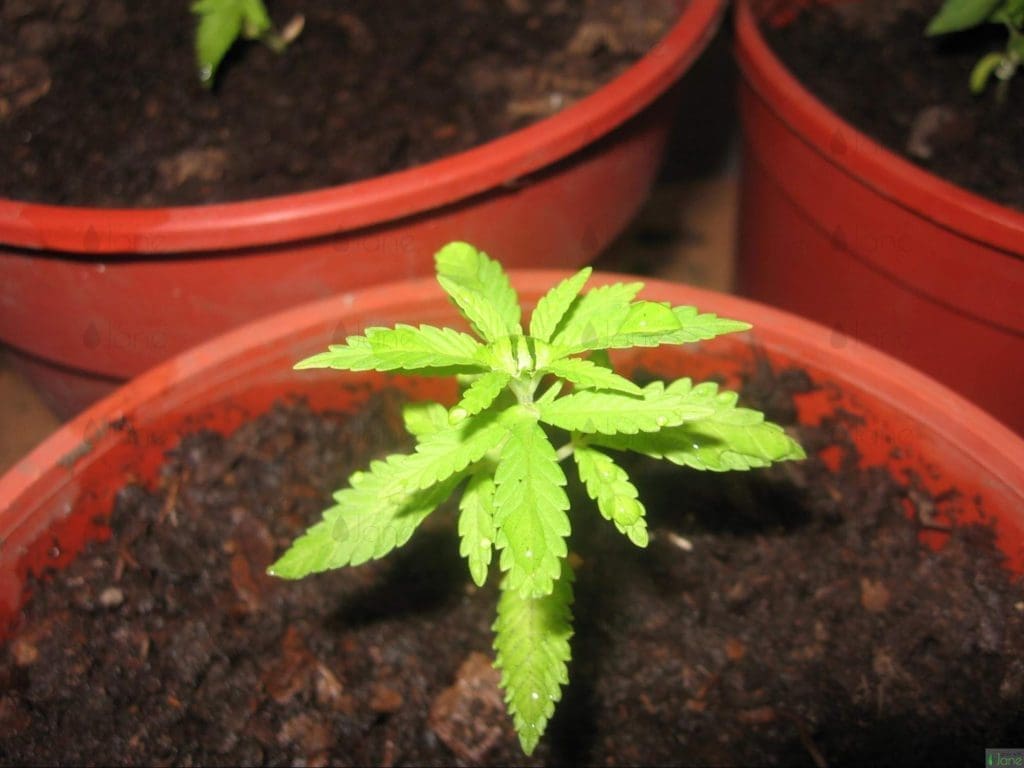
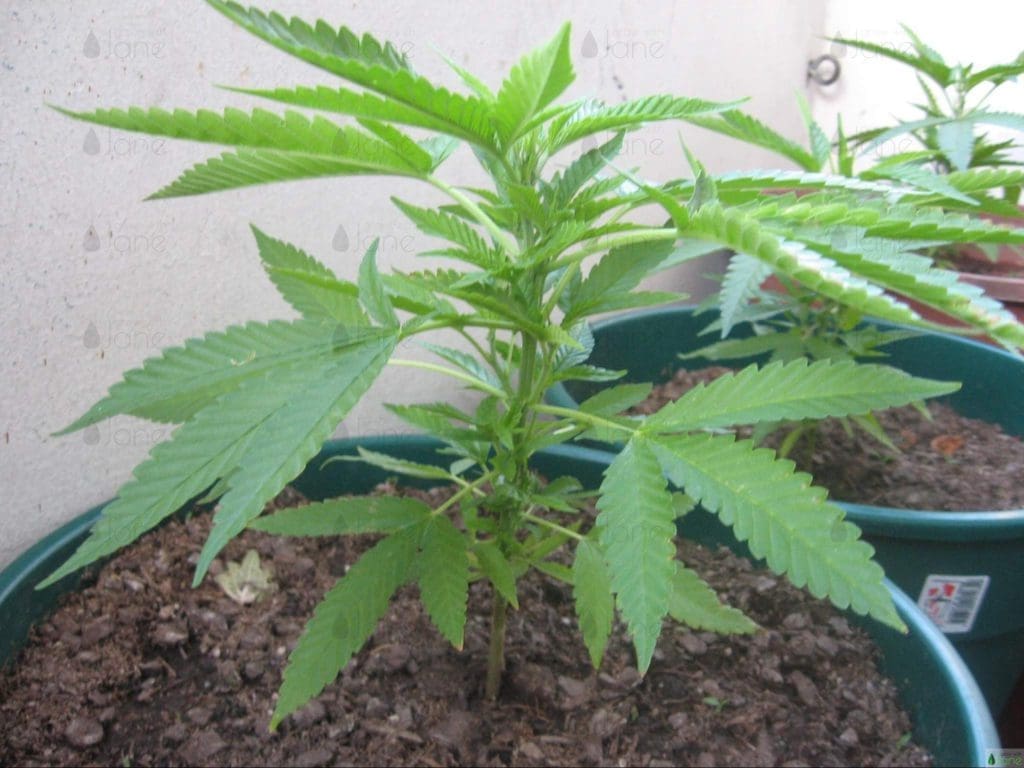

How to tell if your plant is male or female before flowering
Basic growing requirements
Light
During the vegetative stage, a Cannabis plant growing indoors needs 18 hours of light and 6 hours of darkness a day. The vegetative stage may last for as long as you want in indoor crops. Your plant will continue to grow in size and won't flower until you change the photoperiod. It depends on the desired final size of the plant for how long to vegetate your plant.
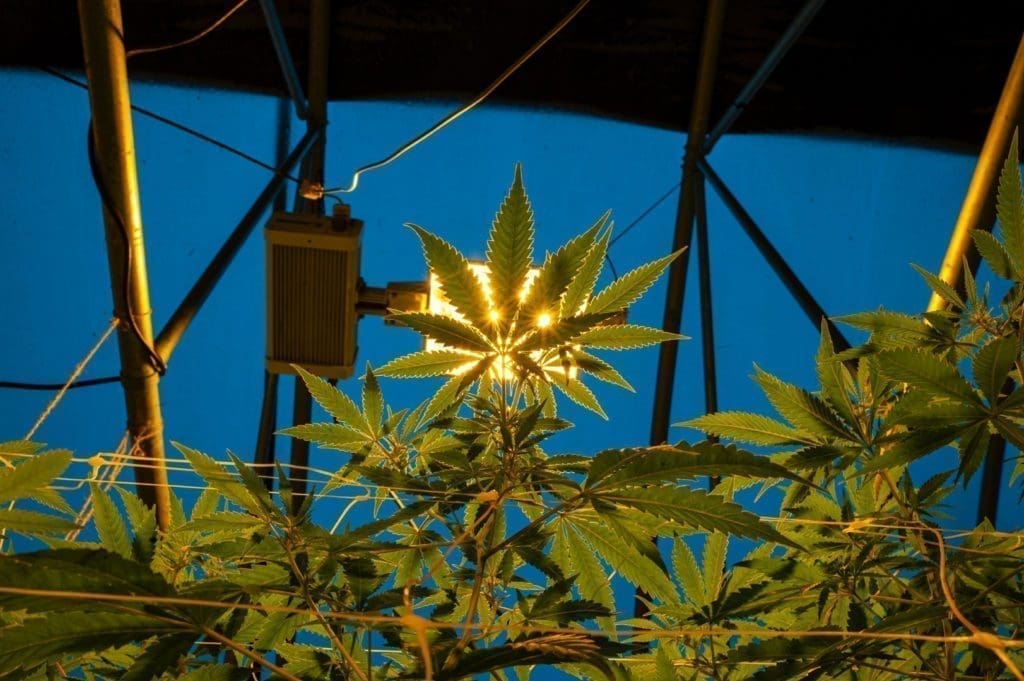
For greenhouse crops, when natural sunlight doesn't reach 18 hours, you can supplement lighting with artificial light for the remaining hours. Complete darkness during the dark period (6 hours) is extremely important. Light pulses or continuous sources of light can "confuse" the plants and delay flowering. Full moon or lights in infrared cameras won't make any changes but intense street lighting might so be careful and cover your plants during the dark hours if necessary.
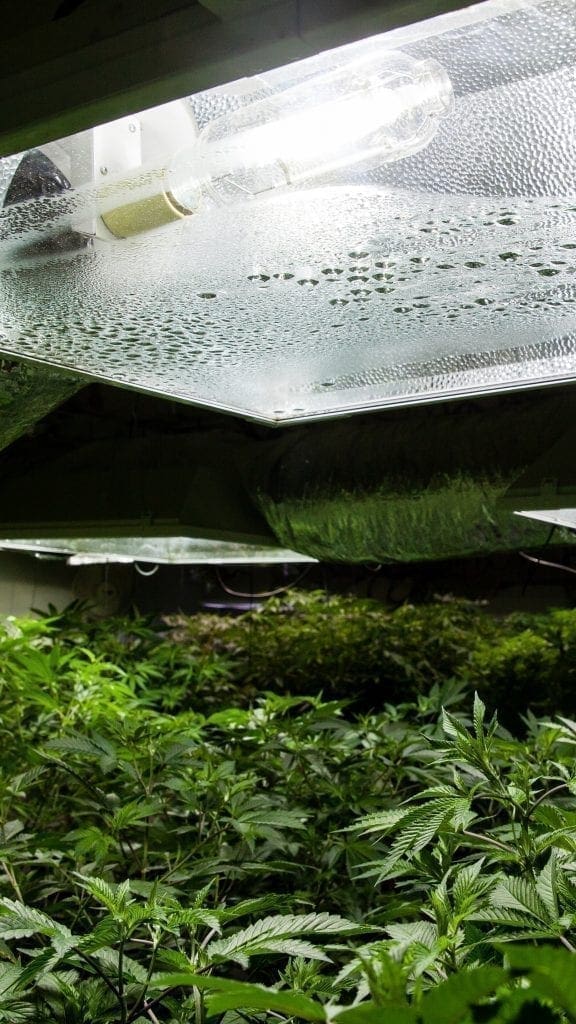
Growing medium
The growing medium is anything where a plant grows, soil mix, coco coir, and peat moss are the most common for Cannabis. A growing medium provides physical support to the plant, allowing root respiration, and holding available water and nutrients for the plant
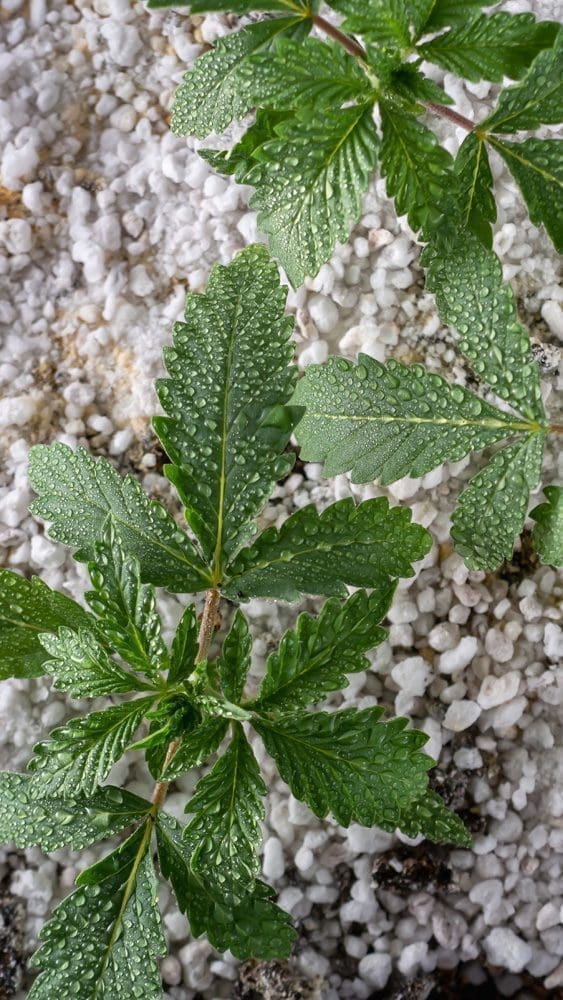
Soil mixes and peat moss mixes are excellent media to start growing, provided that it has the right balance between solids (organic and inorganic matter) and air spaces. Aeration is a key factor in order to keep roots healthy. To avoid soil compaction, you need to add materials such as perlite, vermiculite or coco coir so roots can develop in pore spaces between the solid particle. Each growing medium requires its own watering and fertilizing schedules.

Pot size
The size of your plants will be determined by the environment size, growing lights, pot size, and the nutrition plan you apply to your crop. The bigger the environment and the more space the roots get in their growing medium, the taller and more vigorous your plants will be.
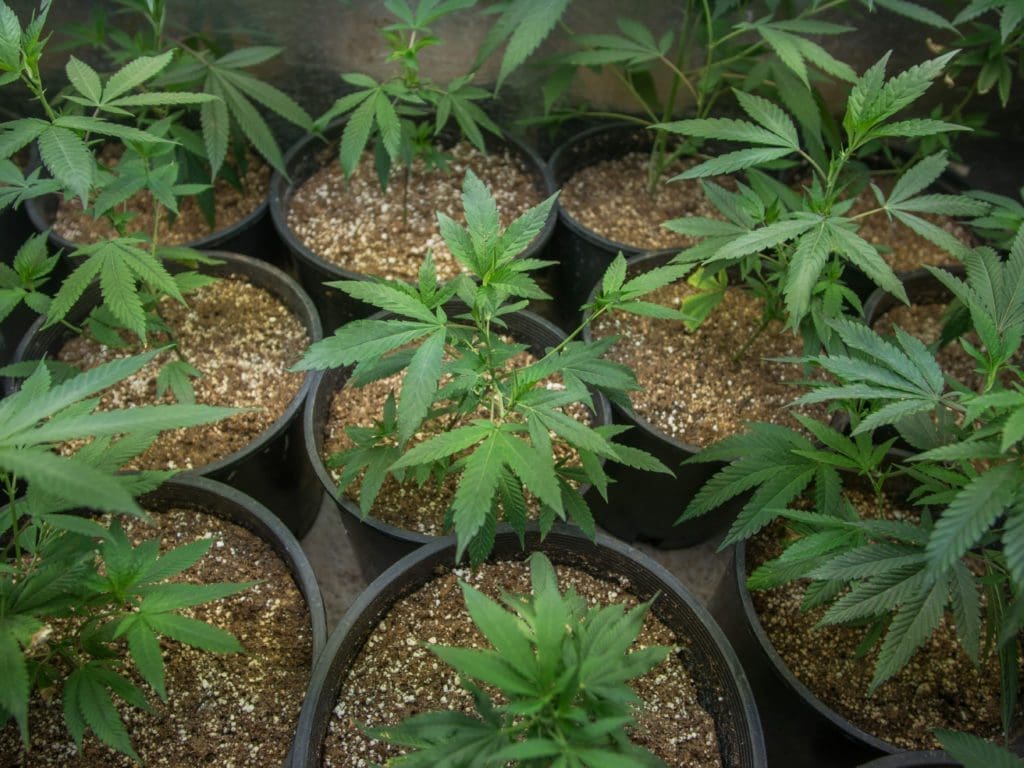
Cannabis grows in almost any container size and adapts accordingly. For indoor crops, 5-liter pots to 25-liter pots are the most common sizes. Above 25 liters, there may be some issues with aeration and watering frequency. If the plant requires to be watered more than once a day, maybe it's calling for a bigger space. The material of the pot must also be considered along with the size and the desired growing medium.
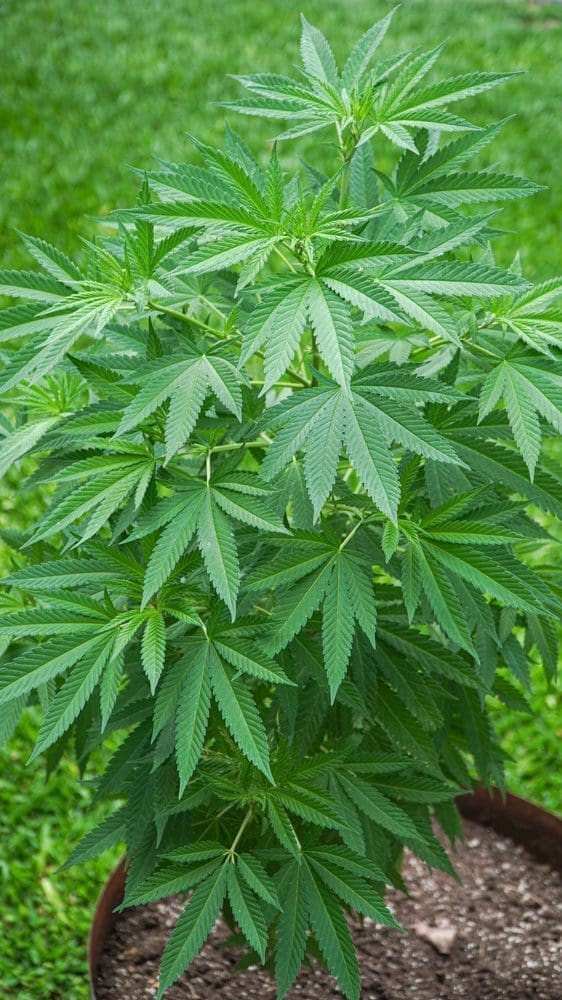
When to Transplant Cannabis
Usually, cannabis responds very well to transplants from smaller pots to bigger pots when the roots had occupied the whole space. Two or even three transplants from seed up to before flowering can help avoid stunted growth, Starting in a small pot helps growers adjust the water given to young plants to avoid overwatering, which causes slow growth, Leaving plants in a too-small pot for too long causes stunted growth. Transplant to the biggest one before switching to the flowering stage.

Watering
Water your plant regularly with clean, safe water. Using chlorine-free or filtered water leads to better results. Always avoid overwatering and watch for good drainage. There are a few rules to know if your plants need watering, for example, the first 3 cm of the soil is dry, your plants are wilting, and the pot feels too light.
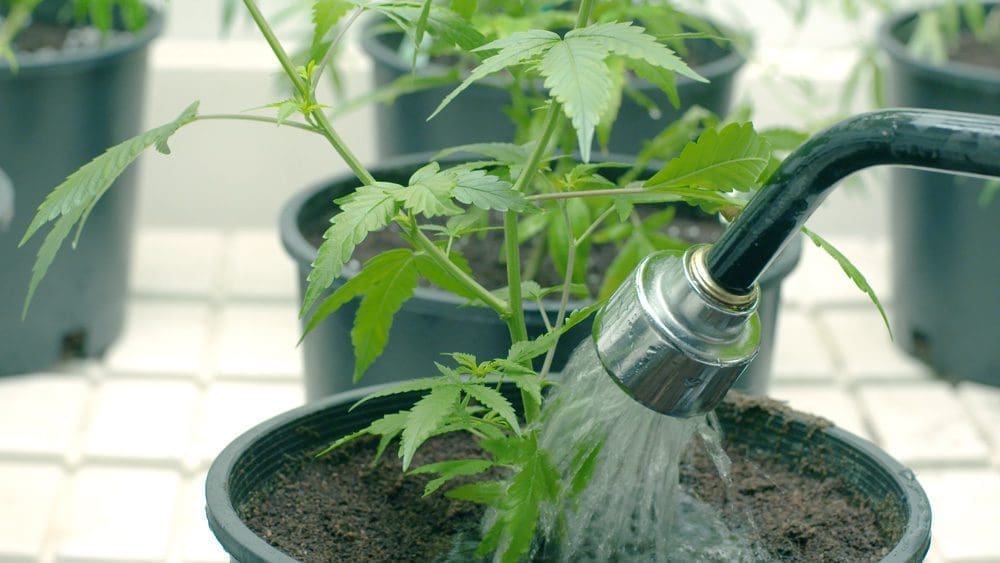
Plants absorb nutrients when the water is at 20°C to 23°C (68 – 73.4°F). Watering with cold water below 15°C (59°F) can make some nutrients like Phosphorus unavailable for the plant to absorb, causing nutrient deficiencies and blocks. Hot water is not good either and very hot water can burn the roots so be careful when watering during the summer months especially.
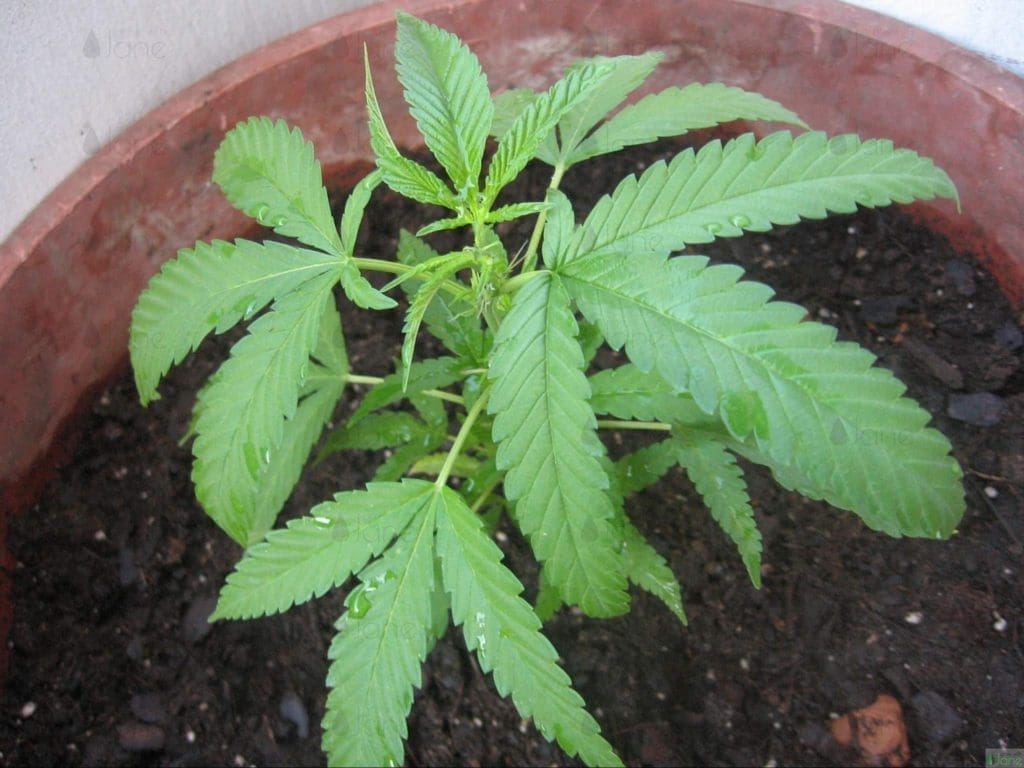
How much water does my plant need?
This depends on the size of the pot, the stage and size of the plant, the growing medium, temperature, and humidity levels, and minerals present in the soil, among other factors. A rule of thumb for growing media such as soil mix with peat moss, perlite, humus, and other organic components may be water with 20% of the size of the pot (in liters of water) and always leave some runoff water. So for a 10-liter pot, 2 liters of water for fertigating would be fine as long as 10% of that water (200 ml) runs off. Some growing media such as coco require much more frequent fertigating than others like worm humus. Peat base mixes usually need frequent watering as well because they retain big amounts of water but if it dries out completely is a bit difficult to get it to hydrate again.
Like everything in cultivating cannabis, it's unique to every grow and the best way is to try and take notes of what's working best.
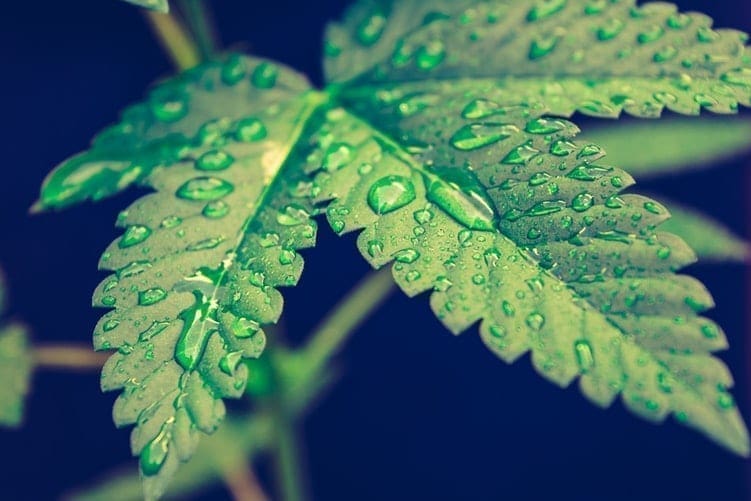
Temperature
Cannabis plants in the vegetative stage thrive in temperatures around 22 – 26°C. (71.6°F – 78.8 °F) but they can withstand many temperature ranges. Temperatures below this range may negatively affect the plant, or even kill it if it's exposed to freezing temperatures for a long period. Temperatures below 16°C (60°F) affect nutrient availability, meaning some nutrients may not be ready for the plant to absorb. This can cause nutrient deficiencies and stunted growth. On the other hand, very high temperatures also affect the plant negatively. Beyond 30°C (86°F), the plant may experience burns in the leaves, heat stress, and other complications. Watering and keeping humidity levels accordingly helps running grow with very high-temperature levels, but it can be difficult.
Temperature and humidity are often measured together in Thermo hygrometers. There are some cheap models that work just fine. For more accurate readings or for keeping constant track, try professional instruments.
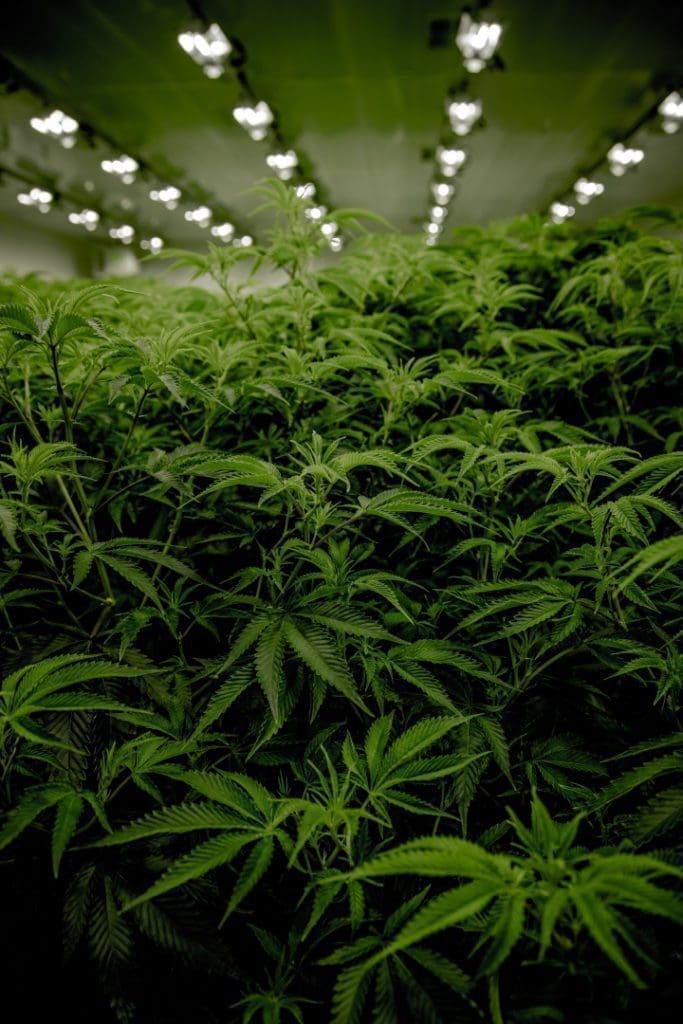
Humidity
Relative humidity measures how much humidity is present in the air expressed as a percentage. In the vegetative stage, the plant grows better in an environment where the relative humidity is around 40-60%.
For environments with very low humidity levels (under 35%), you can add a humidifier to supply your plants with adequate humidity.
On the contrary, for very humid climates, dehumidifiers are a great solution to stabilize humidity levels all along the different stages of the plant, even for the drying process after harvesting. Very high humidity levels (above 65%) with poor ventilation can lead to pests such as fungi and insects and some root problems as well.
Thermo hygrometers are excellent options for keeping track of humidity levels.
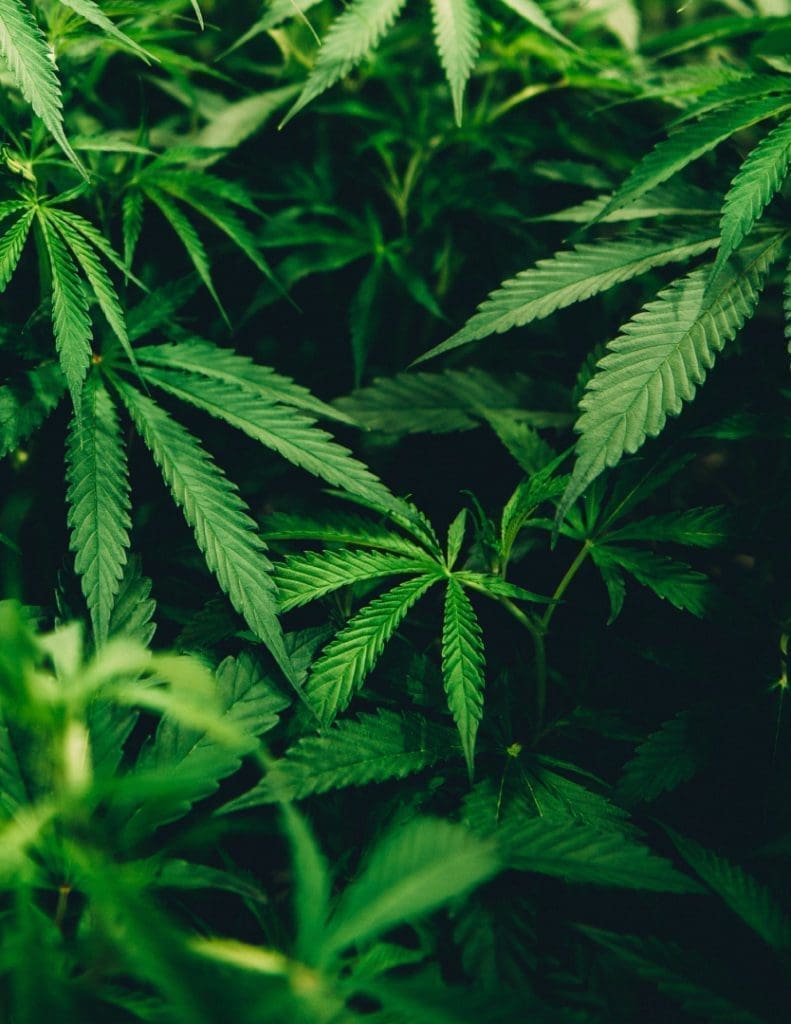
Nutrients
Macronutrients for Cannabis in the vegetative stage
The main fertilizers that the Cannabis plant needs to develop are Nitrogen (N), Phosphorus (P), and Potassium (K). They are needed for the whole plant cycle but in different concentrations depending on the plant stage.
Nitrogen is key during vegetative growth, with lower levels of P and K. When the plant starts to bloom, the concentrations of Phosphorus and Potassium K must be increased progressively, while the N concentrations are lowered. That is why there are specific fertilizers for vegetative and flowering stages.
Nitrogen (N) is key to forming amino acids and making chlorophyll, the pigment used for photosynthesis. This is especially important during the vegetative stage as the plant grows in size. Nitrogen deficiency is the most common one in the veg stage and it shows first in the lower leaves, which turn pale green leaves and start yellowing. If the nitrogen deficiency is not corrected, the leaves show necrosis and the plant experiences stunted growth. Nitrogen moves inside the plant where it's more needed (it's a mobile element) and that's why it shows first in the oldest leaves where the light doesn't reach. If there are one or two leaves like that it's ok. If the yellowing starts climbing up the plant, then you must take action and investigate what's causing the block or deficiency and correct it.
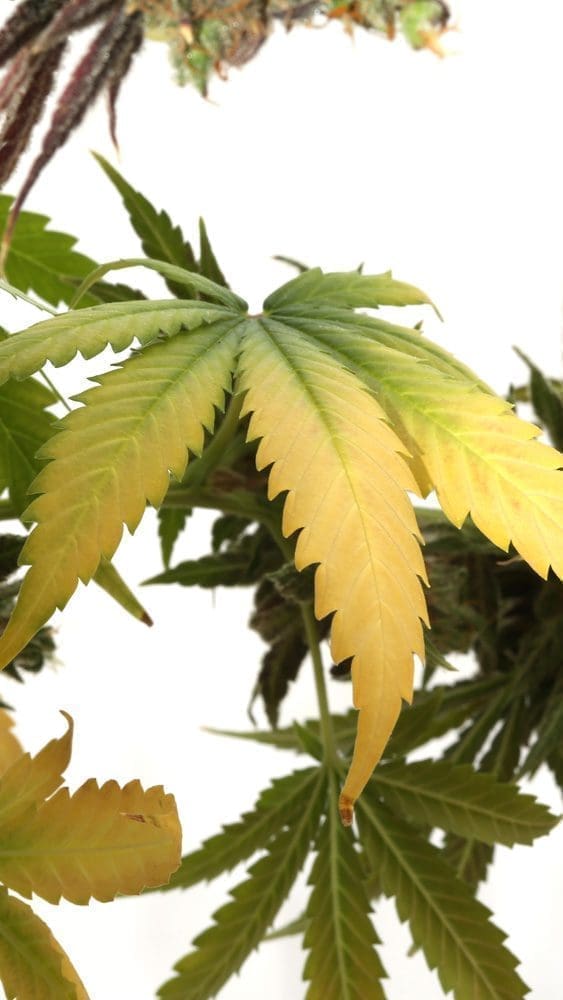
Phosphorus (P) is another micronutrient needed for plant development. Phosphorus is used for root development, energy storage and transfer during photosynthesis, and bud formation, among other important functions. Phosphorus is also a mobile element and the plants translocate it from the older leaves to the new ones. Phosphorus deficiencies in the vegetative stage start as stunted and slow growth of the whole plant and then show on the older leaves as olive green spots. During the flowering stage, Phosphorus will be much needed and buds demand a lot of it, when it's supplied during the vegetative stage there's less chance of deficiencies in flowering.

Potassium is the last macronutrient on the NPK initials and it's key for plant development. Potassium has many roles in plant growth and development. Potassium is key for the plant metabolism as it increments strength and resistance to drought, From regulating water correctly in the plant to transporting sugars during photosynthesis, there are so many roles for Potassium. In the flowering stage, Potassium is key for bud forming and it's important to supply it during the veg stage to avoid deficiencies. Potassium deficiency shows in weak plants with a small yield.

Secondary and micronutrients for the vegetative stage
Other secondary nutrients are necessary for the proper development of the plant. These are Magnesium (Mg), Calcium (Ca), and Sulfur (S). Finally, the micronutrients are necessary but at a minimum concentration. These are Zinc (Zn), Manganese (Mn), Iron, (Fe), Boron (B), Chlorine (Cl), Cobalt (Co), Copper (Cu), Molybdenum (Mb), and Silicon (Si). Micronutrients are needed in trace amounts but are very important for plant metabolism and plants suffer a lot if they are not available.
Calcium and magnesium (often referred to as calmag) are also important elements during the whole plant life cycle. When calcium and magnesium are not present in the first weeks of life plants end up with substantial nutrient deficiencies. Growing mediums based in coco coir need to be supplemented almost constantly with calmag additives, as coco "locks in" the calcium and doesn't leave any available for the plant to absorb. Calcium and magnesium can be found in calcium dolomite, gypsum, and as a calmag liquid or powder additive, ready to use.
Silica is not essential but highly beneficial. Silica helps plants grow stronger cell walls and stronger stems and leaves. Adding Silica or Silicon dioxide to your medium ensures strong plant development. Plants grown in pots with soil mix, coco, and hydroponic systems need silica additives. Silica acts as a protector of many plant diseases such as powdery mildew and it's known to add resistance to bug bites. Adding silica during the whole life cycle helps your plant combat diseases. Also, trichomes have a high percentage of silica so you are helping the plant metabolize components for bigger and tastier buds. You can find silica additives such as Potassium silicate or just silica.
Boron is one of the less known micronutrients and it's important to start all the nutrition process and absorption of the other elements. Boron can be found in very small concentrations in molasses, humic and fulvic acid products, some products intended for rooting, and many fertilizers intended for the vegetative stage. It is usually in small letters and it comes along with other micronutrients as it is not as abundant as the previously named NPK, but it's really important.
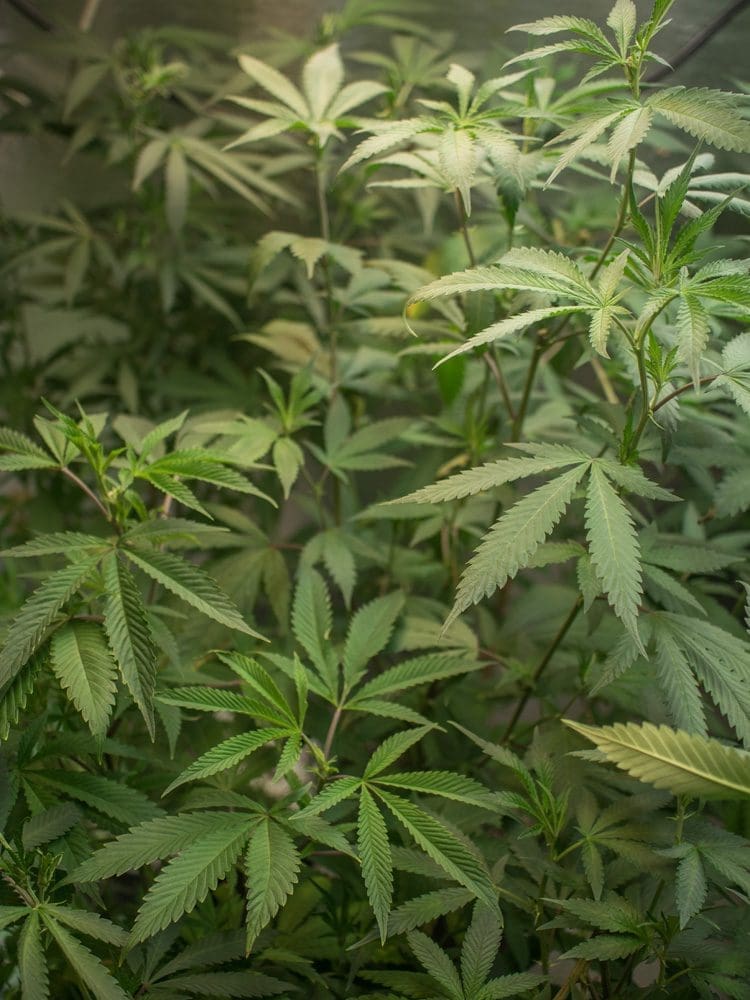
Several brands of fertilizers offer fertilizer kits specially formulated for each stage with the necessary nutrients and some come with additives or biostimulants. Start with the dose suggested by the manufacturer or even 1/2 lower to avoid saturation and gradually increase the amounts until the desired results are achieved. Do not over-apply products because that could damage the plants severely. Follow the nutrient schedule from the manufacturer and adjust as needed. When plants show dark green leaves means they are saturated with nutrients. Water with plain water for that nutrient excess to runoff.
pH levels
PH is a measure of how acidic or alkaline is a substance, in this case, water. PH Goes from 1 to 14, being 1 the most acidic and 14 the most alkaline and 7 being neutral. Cannabis plants prefer a slightly acidic growing medium. In soil mixes, try to keep the pH levels between 6 and 7 for optimal plant growth. Almost every nutrient is only available for the plant to uptake within this range of pH. Watering for many days with water with very high or very low pH levels leads to nutrient deficiencies that negatively affect the plant's development.
If the plant looks green and lush, there's nothing to be worried about. You can just not check pH and everything will be fine. If some yellowing or spots appear on the leaves, check the pH of the plain or filtered water, the nutrient solution, and the runoff water. There's a chance that the nutrient block or deficiency is related to the wrong pH levels. Runoff water must be around within .5pH of the watering pH.
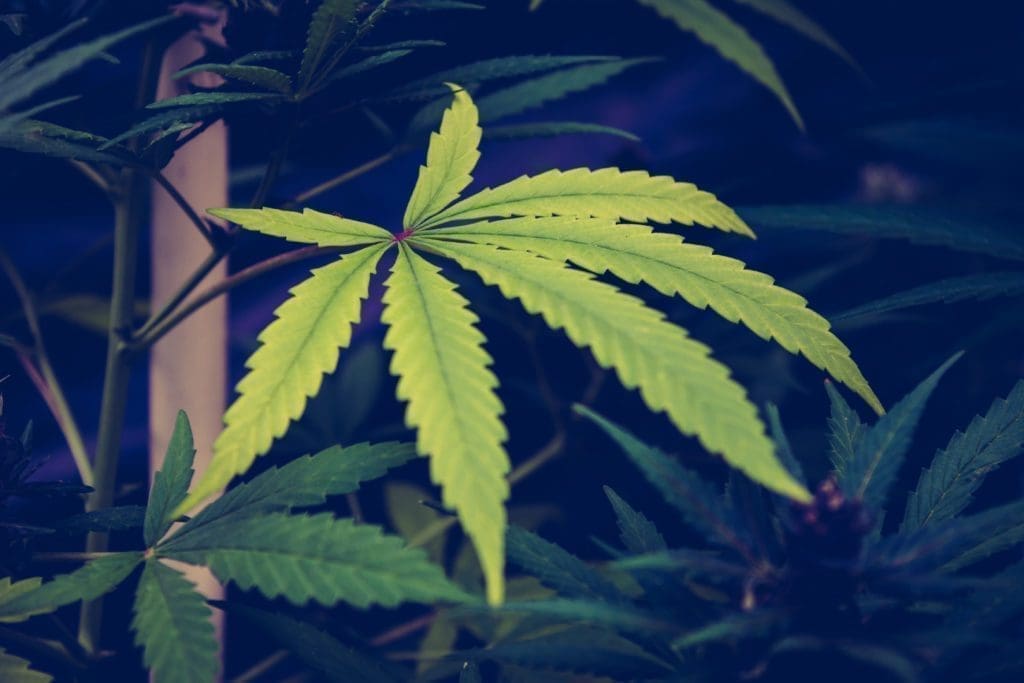
For checking pH levels, pH paper strips are a cheap (but not so accurate) method. Try a pH meter for better readings. If pH is way off too acidic or too alkaline in any of those readings, you need to correct it as soon as possible. There are many products designed to correct pH usually named pH up and pH down or similar. This is especially useful to adjust water and nutrient mixes to avoid pH-related problems.
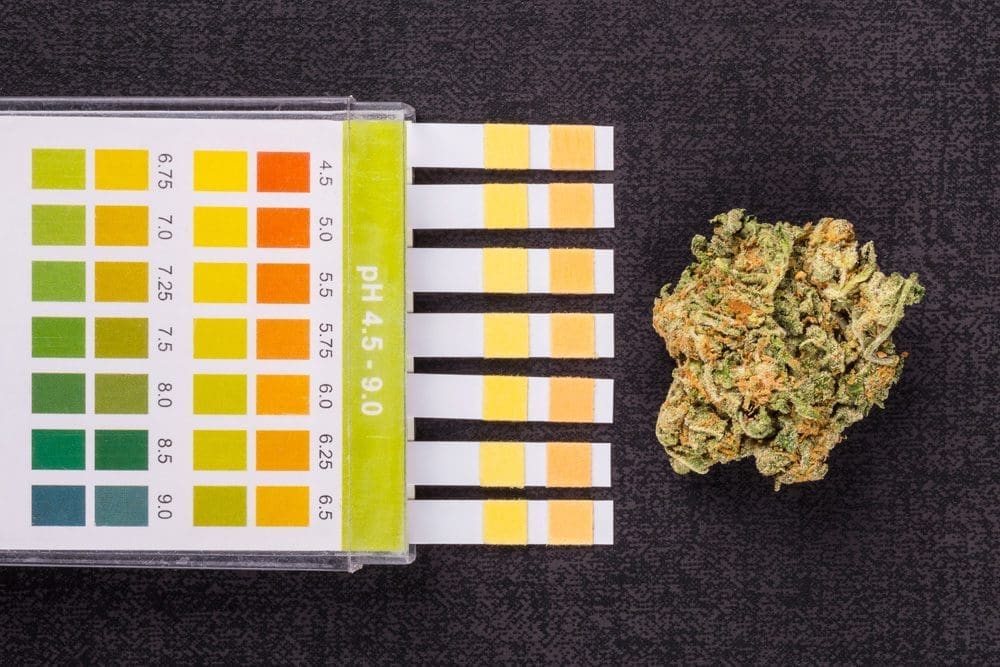
Plan and track all these requirement values and set stage dates in the Grow with Jane app!

Grow with Jane, the app for cannabis home growing.
Track your activities and trees.
Plan ahead by setting repeatable reminders.
Get smart insights customized for your crop.
Share your work with a community of like-minded people while learning to grow better.
How does the Cannabis plant change stages?
The answer is "photoperiod". Photoperiodism is a response to the changes in duration in the cycles of light and dark periods.
Cannabis is an annual plant. This means its flowering period is determined by the seasons (and their changing photoperiods). So, when the cycle ends, the plant dies.
Indoors, you must change your lights timer to a 12/12 hours schedule to trigger the flowering stage. By week 4-6 from seed, Cannabis plants are able to start showing their gender by growing preflowers.
Cannabis life cycle – Weed plant stages
Male, female or hermie? Determine the sex of your plant
It's important to know if your plants are male, female, or hermaphrodites. If you are growing with the intention of harvesting Marijuana buds, you should only allow female plants to grow. So it's a good idea to kill the males and hermies ASAP. Male and hermaphrodite plants soon start to pollinate the female plants. You'll end up with lots of seeds and very few buds.

Female preflowers look like a pair of white hairs (stigma) coming out from a green, round calyx. This structure is also known as "pistils". Many of these small preflowers growing together will become the "buds" we all know, which contain the largest cannabinoids' concentration.
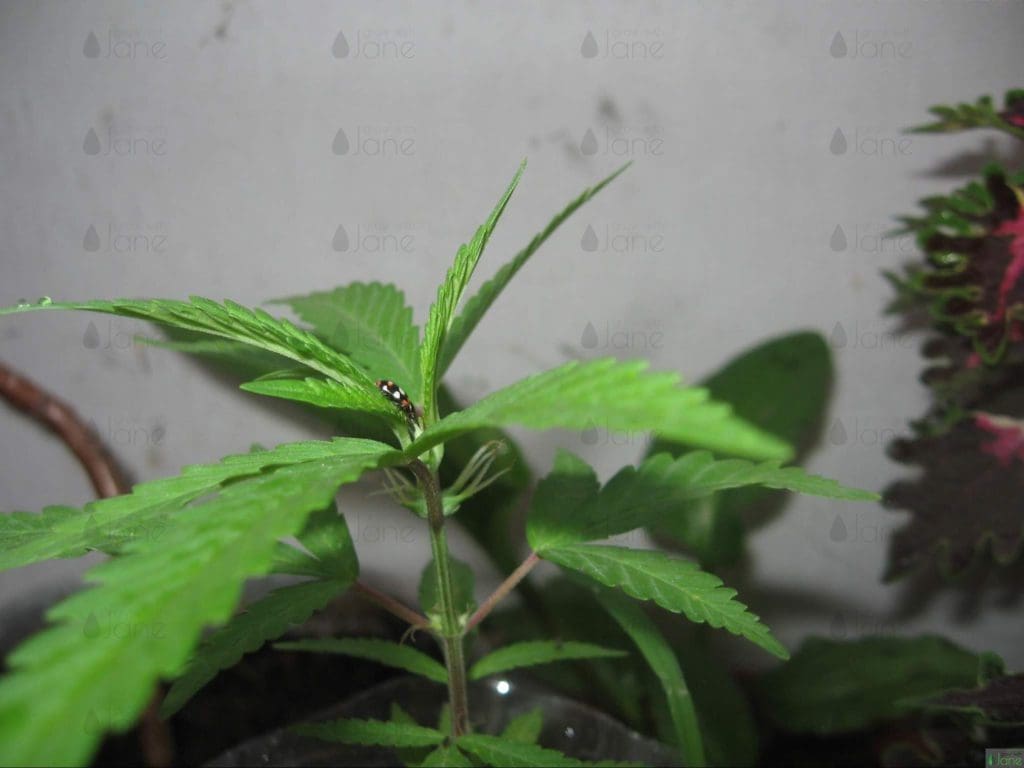
Male preflowers develop first and very fast! Once those pollen sacs are open, they are bound to start pollinating, not only your crop but most plants 5 km around.
Look for early signs of male plants: they are usually taller and less bushy than female plants. Just eradicate them, unless you want to produce seeds in a controlled environment.
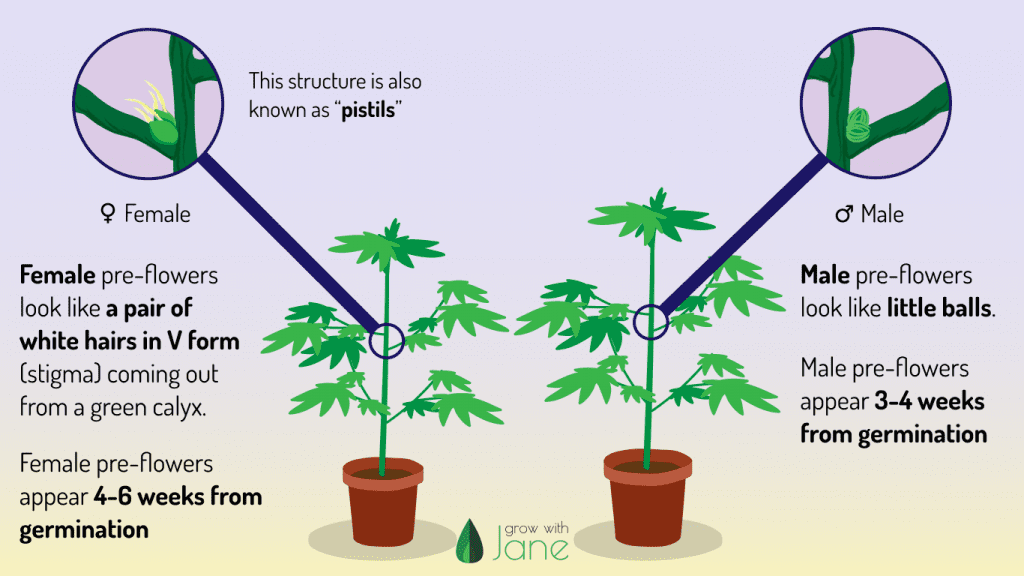
Outdoors, Cannabis plants sprout in Spring and grow in the vegetative stage during Spring and Summer, when they start blooming. When Autumn is coming and the days start to grow shorter, female Cannabis plants stop growing in size. Instead, they develop fat, resinous buds in an attempt to be pollinated by the male plants' pollen. Look for the first signs of flowering stage outdoors and start counting the flowering days.
Indoors, you just need to change the photoperiod (the hours of light/dark) to a schedule of 12 hours of light and 12 hours of darkness. As a result, this change will trigger the flowering response in the plants. In the next weeks, they will grow in size rapidly and start producing buds. Until then, a plant in the vegetative stage will grow stems and leaves, it may show pre-flowers to indicate sex but the buds won't get fat.
The next stage of growth in Cannabis plants is the flowering stage. This starts with the already mentioned change of photoperiod. By now, your plants had already grown their bodies strong and have many fan leaves and stems. Those nodes sites with white hair will start growing more and more pistils (hair). After that, it will start to form the buds a.k.a. your future harvest! Keep on working on them!!
First signs of the flowering stage in Cannabis plants
Source: https://growithjane.com/cannabis-plant-vegetative-stage/
0 Response to "When to Feed My Marijuana Vegetative Plants"
Post a Comment